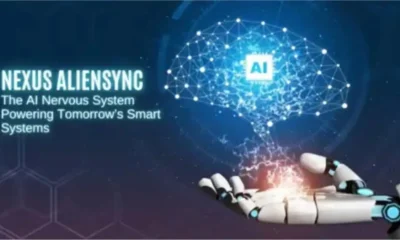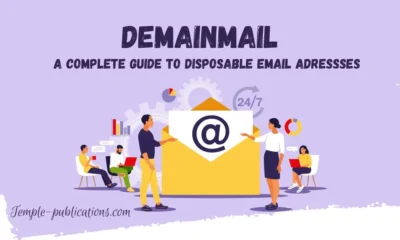TECHNOLOGY
The Role of Cloud-Based Platforms in Modern Estimating

In these days’ dynamic and notably competitive construction industry, task fulfillment hinges on particular budgeting, real-time collaboration, and speedy decision-making. Cloud-primarily based estimating structures have emerged as a game-changer in this environment, empowering professionals such as the Construction Estimator to supply correct value forecasts, reduce guide errors, and stay aligned with evolving project needs. These systems have efficiently changed many conventional strategies that have been as soon as vulnerable to inefficiencies and miscommunication.
Benefits of Real-Time Data and Centralized Access
One of the biggest benefits of cloud-based structures is real-time data access. In traditional estimating, a single replace in task scope might take hours—or even days—to communicate across departments. With cloud structures, all mission stakeholders, from architects to contractors, can get right of entry to and replace the same information concurrently. This streamlined method not only saves time but also ensures consistency and accuracy throughout all undertaking documents.
Centralized get entry to means that the entirety from blueprints to preceding estimates, supplier databases, and mission templates is stored in a single location. This accessibility dramatically reduces the time spent attempting to find files and version tracking, which may be critical in fast-paced environments with strict closing dates.
Enhancing Collaboration Across Teams
Cloud-based platforms foster a collaborative environment that was previously tough to acquire with siloed computing device software programs. Team members throughout one-of-a-kind disciplines and geographies can paintings together seamlessly. Estimators can get hold of real-time remarks from task managers, architects, and engineers, allowing faster revisions and faster approvals.
This collaborative nature also benefits clients, who can live informed approximately price modifications, scope revisions, and material picks as they take place. With improved transparency, belief among service carriers and customers is bolstered, leading to smoother undertaking execution.
Scalability and Flexibility for All Project Sizes
Whether it’s a small residential build or a huge infrastructure development, cloud platforms offer unmatched scalability. Estimators can regulate inputs and outputs depending on the venture size and complexity. This flexibility lets companies take on a much broader range of initiatives without investing in additional software or a body of education for everyone.
Additionally, cloud systems support a couple of record codecs and project types, making them well-suited for both legacy designs and modern architectural models. This versatility guarantees that groups can preserve the usage of the tools they are familiar with at the same time as cashing in on cutting-edge improvements.
Bridging the Gap Between Design and Estimation
The integration of cloud platforms with digital layout gear is a pivotal development within the production enterprise. Design files created using CAD Services can now be seamlessly imported into estimating structures, removing the need for guide information transfer. This integration permits estimators to conduct amount takeoffs, practice cost parameters, and generate budgets directly from design files.
Moreover, cloud-based gear regularly guides version management. This way, every time a CAD drawing is up to date, the estimator receives a notification and might, without delay, adjust the price range, preserving alignment between design and fee projections. This no longer simply guarantees real-time accuracy but also substantially reduces the risk of rework and miscommunication.
Automating Estimation for Greater Efficiency
Automation is another powerful feature of cloud-based estimating platforms. Many systems come ready with clever templates, rule-primarily based workflows, and machine learning skills that speed up repetitive duties. Estimators can create libraries of fee items, labor prices, and ancient records, allowing the software to generate constant and enormously accurate projections throughout a couple of initiatives.
As the software program learns from preceding facts, it is also able to provide predictive analytics. This consists of traits in fabric pricing, hard work availability, and capability delays, giving the foresight to mitigate dangers and make knowledgeable decisions.
Enhancing Mobility and Field Connectivity
Cloud-based structures are inherently cellular, permitting estimators and project managers to get access to crucial task records from tablets, smartphones, or laptops. Whether in the administrative center, on-site, or visiting, team members can view, edit, and approve price-associated documents in real time.
This stage of mobility ensures that updates made inside the subject are without delay reflected within the fundamental system. For instance, if a contractor notes an exchange in material availability, the estimator can revise the budget right away, keeping stakeholders knowledgeable and preventing scope creep.
Data Security and Compliance
Data protection is a top priority in any digital solution, and cloud-primarily based structures are built with this in mind. Most offer advanced encryption, consumer-stage get admission to controls, and automatic backups. This facilitates the creation of companies to guard sensitive financial statistics and ensures compliance with industry regulations.
Audit trails are another characteristic normally located in those platforms. Every change is logged and timestamped, supplying transparency and accountability. This is especially useful at some point of disputes or audits, in which having a verifiable history can save time and legal expense.
Future-Proofing Through Digital Transformation
By investing in cloud-primarily based estimating equipment, construction corporations aren’t handiest utilizing their current state-of-the-art abilities but also preparing for future improvements. These platforms integrate easily with different virtual answers along with BIM (Building Information Modeling), IoT sensors, and task management software, developing a complete atmosphere that helps the total creation lifecycle. They are particularly valuable for groups providing complete Construction Estimating Services, where precision and adaptability are critical.
Clients these days count on quick turnarounds, fee accuracy, and open verbal exchange. Cloud-based estimating systems help deliver all 3, giving firms a sizeable, aggressive benefit.
Conclusion: Transforming the Estimating Landscape
The shift to cloud-based estimating systems marks a good-sized transformation in the production enterprise. From progressed accuracy and collaboration to greater mobility and automation, these systems offer equipment that conventional techniques cannot fit. As creation initiatives become more complex, the function of cloud-based structures will best end up more critical. For companies seeking to live beforehand, embracing this generation isn’t always simply a choice—it’s a need.
-

 BIOGRAPHY7 months ago
BIOGRAPHY7 months agoBehind the Scenes with Sandra Orlow: An Exclusive Interview
-

 HOME1 year ago
HOME1 year agoDiscovering Insights: A Deep Dive into the //vital-mag.net blog
-

 HOME1 year ago
HOME1 year agoSifangds in Action: Real-Life Applications and Success Stories
-

 BIOGRAPHY1 year ago
BIOGRAPHY1 year agoThe Woman Behind the Comedian: Meet Andrew Santino Wife




























